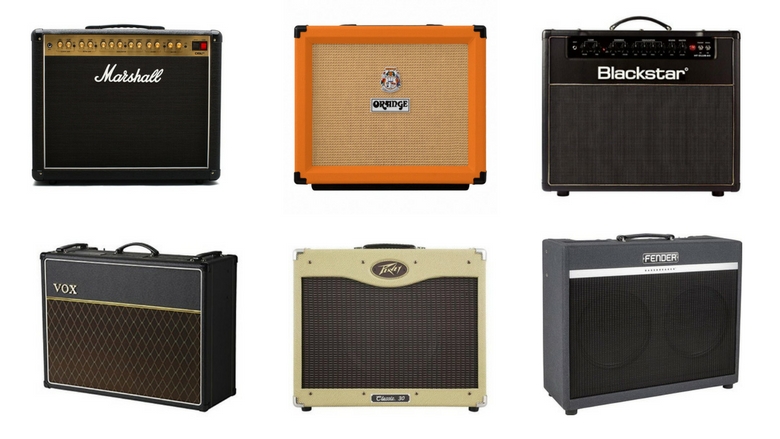
It’s no longer necessary to drag a half stack to every gig. In this world of decreasing stage volume, you can make the most of any gig with a solid, affordable gigging amp.
In our small combo amps post, we capped it at 40 watts and $300. Here we’ll cap it at 100 watts and $1,000, with a focus on combo style amps. Looking for a stage amp that won’t break your back and the budget? Consider our list of the best amps under $1,000 for gigging for your next tour.
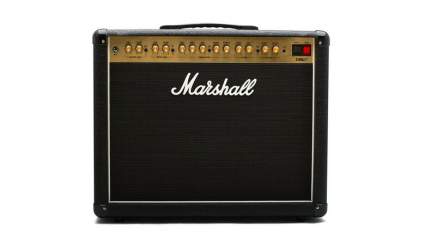
|
Amazon Customer Reviews
|
Price: $729.00 Shop at Amazon | Shop now Read our review |
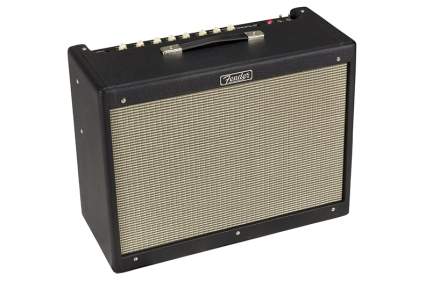
|
Amazon Customer Reviews
|
Price: $974.99 Shop at Amazon | Shop now Read our review |
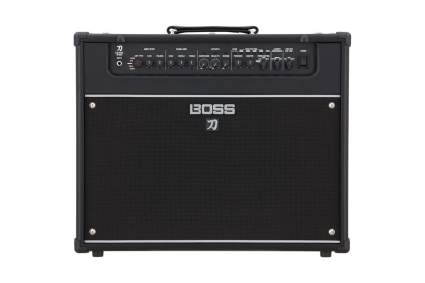
|
Amazon Customer Reviews
|
Price: $514.99 Shop at Amazon | Shop now Read our review |
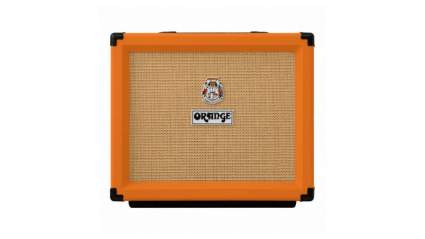
|
Amazon Customer Reviews
|
Price: $899.00 Shop at Amazon | Shop now Read our review |
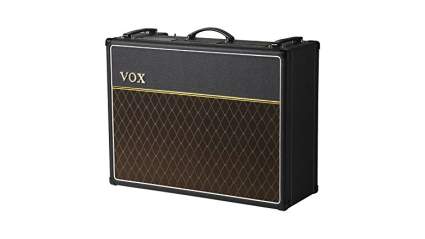
|
Amazon Customer Reviews
|
Price: $999.99 Shop at Amazon | Shop now Read our review |
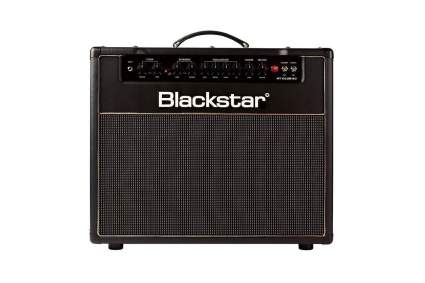
|
Amazon Customer Reviews
|
Price: $758.53 Shop at Amazon | Shop now Read our review |
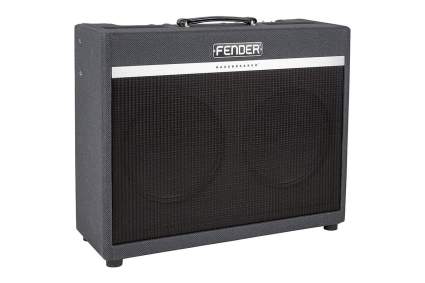
|
Amazon Customer Reviews
|
Price: $849.99 Shop at Amazon | Shop now Read our review |
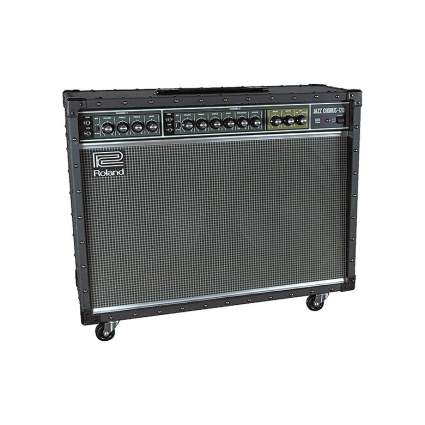
|
Amazon Customer Reviews
|
Price: $1,241.99 Shop at Amazon | Shop now Read our review |

|
Amazon Customer Reviews
|
Price: $520.00 Shop at Amazon | Shop now Read our review |
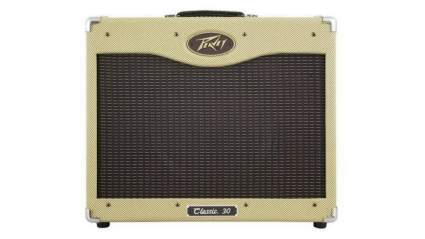
|
Amazon Customer Reviews
|
Price: $999.99 Shop at Amazon | Shop now Read our review |

|
Amazon Customer Reviews
|
Price: $549.99 Shop at Amazon | Shop now Read our review |
-
1. Marshall Amps M-DSL40CR-U Guitar Combo Amplifier
Pros:- Effects loop
- Emulated out, plus five external output options
- On-board reverb
- Switchable between 40 and 20 watts
Cons:- 50 pounds is still pretty heavy
- Reverb is digital
- EQ is shared between channels
- No headphone jack
If you’ve ever watched more than one of the Andeton’s Sound Like…Without Busting the Bank series, you know that it’s a running joke that they purposely try not to pick the DSL40C for the rigs. The challenge is to assemble a giggable rig that emulates the sound of a famous guitarist. The reason they keep going back to it is due to its flexibility and overall excellent tone at a great price, which is what makes this a key choice for amps under $1,000.
Technically, the amp featured in those videos was the outgoing model, to be replaced by this one. It carries a virtually identical name, but adds new speaker outs, MIDI control, and gets a slight re-voicing to go with the new V-Type speaker, but is otherwise basically the same.
A decent amount of flexibility comes from the Pentode/Triode switch which allows you to select 40 or 20 watts. Since it’s a Marshall, you’re meant to use it in its natural driven, compressed state, so both channels focus on gain, with a Classic Gain and an Ultra Gain channel. There’s a “Softube” emulated output for direct-in recording situations.
The preamp is driven by three ECC83 tubes, while the power stage has one ECC83 and two EL84s. There’s a five-band EQ, but that is shared between both channels, so you’ll need an external EQ to shape them separately. In this amp, you also get a effects loop and an 80-watt Celestion speaker, but no headphone jack. Still, if it’s Marshall tone you’re after, it’s hard to go wrong with this workhorse.
Whether you opt for this latest version or one of the previous and still great DSL40s, buying used on Reverb offers a steep discount over new.
Specs:
- Watts: 20/40
- Speaker: One 12-inch Celestion V-Type
- Preamp tubes: Four ECC83s
- Power amp tubes: Two EL84s
- Effects loop?: Yes
- Weight: 50 pounds
Find more Marshall Amps M-DSL40CR-U Guitar Combo Amplifier information and reviews here.
-
2. Fender Hot Rod Deluxe IV 40 Watt Electric Guitar Amplifier
Pros:- Ubiquitous, well-loved stage amp
- Effects loop
- Newly revised circuit for better definition
- Solid on-board spring reverb
Cons:- Mass production results in some quality control issues
- Some players find that it hums more than comparably-priced options
- Other makers offer better value in some respects
- No headphone jack
It goes without saying that the Hot Rod Deluxe should appear on this list. Along with its stablemate the Blues Jr., this is one of the most ubiquitous stage amps ever created, priced within reach of the working musician. It does that Fender thing exactly as you expect.
Like the Marshall above, though, it might not be the amp you quite remember. The entire Hot Rod line was updated this year, and this fourth version of the HRD in particular received its fair share of tweaks. Most of them come on the drive channel, which was re-voiced to be distinct and, you know, usable. It was never a well-loved dirty sound, which in some ways led to its reputation as a good pedal platform because you basically had to put a drive pedal in front of it.
To address this, they added midrange and tamed the highs to create a new Fender drive sound that is sweeter and more sustaining, referencing the Tweed heritage. This is available across two drive channels, helpfully called Drive and More Drive and accessed with the included two button footswitch.
Naturally, it still possesses the magnificent Fender clean channel everyone raves about. Even that’s been slightly improved upon with an updated reverb circuit that smooths out the response of units of the past. If that’s what you’re looking for, this is a fine place to start, both because it’s relatively inexpensive and because it’s on the relatively light side for amps of this nature.
The Hot Rod Deluxe IV can be found for under $500 on Reverb, along with any number of previous versions if you don’t need the updates.
Specs:
- Watts: 40
- Speaker: 12-inch Celestion A-Type
- Preamp tubes: Three 12AX7s
- Power amp tubes: Two 6L6s
- Effects loop?: Yes
- Weight: 41 pounds
Find more Fender Hot Rod Deluxe IV 40 Watt Electric Guitar Amplifier information and reviews here.
-
3. Boss Katana Artist 100-watt 1×12 Combo Amplifier
Pros:- Maybe the best solid state amp going
- Fully loaded with Boss effects
- Great cabinet and speaker
- USB connectable to your computer
Cons:- Some people won't want to pay this for solid state
- On-board effects might be a waste if you have a decent pedalboard
- Premium over the Katana 100 may not be worth it to some
- Some find the speaker can't handle huge low-end sounds
The Katana range from Boss has more than proven itself over the last few years. They are, in a word, surprising. Firstly, they’re solid state, which might turn some people off from the get-go. But countless demos have proven that they they are not the solid state amps of yesteryear and they more than hold their own against tube amps.
In a sense, Boss have created their own class of amplifiers here, particularly in this Artist version of the Katana. In a world where Kemper and Helix are popping up everywhere, yet true-blue tube amps are still revered, this amp bridges the divide so well. There are not just built-in effects; every Boss effect is in here. So, too, are five different amp voicings, an on-board attenuator for 100 watt, 50 watt, and .5 watt settings, cabinet resonance, and line out cabinet modeling, all assignable to five preset banks. It also has USB out, so you can use it as a recording tool.
But all that aside, you could ignore the bells and whistles and enjoy this as a straight-ahead amp, too. The Artist version features a larger cabinet for greater resonance over the standard Katana 100, and it has a semi-closed back that allows for a range of vintage and modern tones. The speaker is a 12-inch Waza design aimed at a British-style sound. It covers a lot of ground.
That said, although the effects make it worth it, for this kind of money, you could get any number of tube amps and drive them hard. You’ll buy this one if you want the most flexibilty and the most the Katana has to offer. The Katana 100 and Katana 50 are comparatively dirt cheap and offer all of the whiz-bang technology. Opt for the Artist if the extra muscle in the cabinet and speaker are required for your gigging situations.
A pretty hefty discount can be found on used units if you search for this amp on Reverb.
Specs:
- Watts: 100
- Speaker: One 12-inch Waza
- Preamp tubes: n/a
- Power amp tubes: n/a
- Effects loop?: Yes
- Weight: 42 pounds
Find more Boss Katana Artist 100-watt 1x12 Combo information and reviews here.
-
4. Orange Rocker 15 Combo Amp
Pros:- Power attenuation for 15, 7, 1, and .5 watt settings
- Buffered effects loop
- Dual channel
- Uses the same transformers at the Terror heads
Cons:- 15 watts may not be quite enough in some cases
- Arguably, the Rocker 32 is the real showpiece of the line, but is over budget
- No on-board reverb — you’ll have to supply your own
Since buying my beloved Crush 35RT, I’ve become something of an Orange fan. More recently, I picked up a Micro Dark just for fun. If those relatively low-cost options can sound good, it bodes well for their professional offerings.
This amp makes the legendary Orange sound available in one of their most-accessible packages. Though I do love the Crush, there are exactly zero tubes in it, so it doesn’t roar and crunch the same way this one does. Compared to the other options on this list, it’s got an interesting tube complement, with three 12A87s and a 12AT7 making up the preamp. Along with the custom-designed transformers that can also be found in the Terror heads, you’re getting the full Orange experience.
While other amps on this list have some degree of power attenuation, this one offers the most versatility, allowing you to select between wide open at 15 watts all the way down to 0.5 watts for home use. I can attest from my use of the Micro Dark that this will come in handy, because Orange amps are just screamingly loud. If it weren’t for being solid state, I’d wish for power attenuation on my Crush.
Aside from that, you get a clean and a dirty channel, both of which devour pedals and are especially good pushed with a high-quality boost. The Orange FS-1 will help you with those channel switches.
At 15 watts and with a 10-inch speaker, you’ll definitely cut through the mix, but admittedly you aren’t moving tons of air. If there’s one major drawback to this amp, it’s that it stands in the shadow of big brother Rocker 32, which is over budget. That’s a true-stereo amp with a bit more power and all kinds of wet/dry possibilities. Still, if you don’t need all that and you just want a really good, really portable Orange amp, this is a great choice.
Used examples get as low as about $500 on Reverb, so it’s worth checking there if you don’t need something box-fresh.
Specs:
- Watts: 15
- Speaker: One 10-inch Voice of the World Gold Label
- Preamp tubes: Three 12AX7s, one 12AT7
- Power amp tubes: Two EL84s
- Effects loop?: Yes, buffered
- Weight: 30 pounds
Find more Orange Rocker 15 Combo Amp information and reviews here.
-
5. VOX AC15C2 Guitar Combo Amplifier
Pros:- Legendary Vox amp
- On-board tremolo and reverb
- Normal & Top Boost channels
- Packed with Celestion Greenbacks
Cons:- Pricey for the wattage
- Bass frequencies tend to be rolled off in these amps
- Back-breakingly heavy, especially for the wattage
I should hope I don’t have to explain this one to you. Like the Marshall above, the Vox AC is an amp you stick on stage, turn it up to ten, and shred. Okay, maybe not shred; this isn’t a super-high-gain amp or anything. This is for those chiming, punchy crunch tones you can almost hear just by seeing it.
Unlike the ACs of the past, these have a few features that make them more useful for the modern player. For one thing, the Tone Cut happens in the power stage, which gives a more finite control over the EQ shape. When opting for this two-speaker configuration, the on-board reverb tank is upgraded to the unit from the larger AC30. The external speaker jack is switchable between eight and 16 ohms, although you’d have to go out of your way to beat the built-in Celestion Greenbacks. The preamp section is driven by three 12AX7s, while the power section holds two EL84s.
If you’re looking at this one, you have a pretty specific idea of what you want. It’s incredibly loud for 15 watts, so most players in most situations will do just fine. If you want to break the budget, you could of course opt for the AC30C2 for even more Top Boosted power. On the other hand, for a lot less, you can also get the VT100X modeling amp, which is 100 watts and saves you almost $300.
Thanks to the long history of the AC15, there are plenty of great used options on Reverb, though the price can vary considerably depending on which era and exact model you opt for.
Specs:
- Watts: 15
- Speaker: Two 12-inch Celestion Greenbacks
- Preamp tubes: Three 12AX7s
- Power amp tubes: Two EL84s
- Effects loop?: Yes, bypassable
- Weight: 75 pounds
Find more VOX AC15C2 Guitar Combo Amplifier information and reviews here.
-
6. Blackstar HT Club 40 Mark II Guitar Combo Amplifier
Pros:- Two channels with two modes each (footswitch included)
- Three-band EQ plus ISF control that creates a spectrum from Fender to Marshall tones
- On-board reverb
- Effects loop
Cons:- Heavier than some amps with two speakers
- Reverb is digital
- Doesn’t have quite the cache of bigger brands
Blackstar has carved a niche for itself by pricing just below the Marshall and Fender options, but delivering every bit the product. Especially key to their offerings is the Infinite Shape Feature, which is specifically designed to allow the user to dial in a setting from Fender at one extreme (think higher headroom for cleans) to Marshall at the other (sweetly compressed breakup for dirt).
Combining two ECC83s in the preamp and two EL34s in the power section, this all-tube amp features a clean channel and an overdrive. The clean channel has two modes called Boutique and Modern, while the Overdrive has two modes called Classic and Modern. Essentially, in both cases, the Modern setting will give you punchier crunch, with the difference being the baseline gain. So, with the ISF turned fully counter-clockwise and the amp on the first channel in Boutique mode, that’s probably something akin to a Fender Princeton, for example. With the ISF turned fully clockwise, the amp on the second channel in Classic mode, you’re in Plexi territory. The digital reverb features a dark/bright switch and there is an emulated DI out for recording. This is certainly a dark horse candidate for the best amp going right now for the money and worth a look.
If you want to go a little more modern and get some modeling, you might try the IDCORE100, which is cheaper and 100 watts.
Used stock is somewhat limited on Reverb for the Mark II, but if you hold out, it’s not unusual to see them around $500.
Specs:
- Watts: 40
- Speaker: One 12-inch Celestion
- Preamp tubes: Two ECC83s
- Power amp tubes: Two EL84s
- Effects loop?: Yes
- Weight: 68 pounds
-
7. Fender Bassbreaker 18/30 Combo
Pros:- Switchable between 18 and 30 watts
- Effects loop
- Super powerful for its wattage
- Two 12-inch speakers
Cons:- No on-board reverb — you’ll have to supply your own
- Some reviewers complain of effects loop hum
- Some units ship with bad tubes
- Not as well-loved as its Hot Rod Deluxe sibling
New last year, Fender’s Bassbreaker combines the legendary use of the 50s Bassman as a guitar amp with 60s-era Blackface Deluxe circuitry. The result is a simple but powerful amp capable of a huge amount of grit in the British tone tradition. You still get the high-headroom cleans you expect in a Fender, but this is a decidedly modern amp, meant to be driven aggressively in the midrange. In some ways, it’s the anti-Hot Rod Deluxe.
This particular model is a 2×12 combo that can be run at 18 or 30 watts, depending on your needs. Power is provided by four EL84 tubes, which on channel one provides a high-headroom, glassy clean, and on channel two a warm, heavy crunch. If you want to use an extension cabinet, you can choose between four, eight, and 16 ohms with the impedance selector. All this, and it’s ten pounds lighter than the Marshall.
I’m a little biased because this is by far my favorite new amp in a long while. I love the way it takes pedals (which is good, because you need to bring your own reverb) and its excellent stage presence. There’s also a 45-watt version of this amp that just barely skates in under budget.
Occasionally, you can find a used Bassbreaker on Reverb for around $400, though values are generally holding better than that.
Specs:
- Watts: 18/30
- Speaker: Two 12-inch Celestion V-Type
- Preamp tubes: Two 12AX7s
- Power amp tubes: Four EL84s
- Effects loop?: Yes
- Weight: 50 pounds
Find more Fender Bassbreaker 18/30 Combo information and reviews here.
-
8. Roland JC-120 Guitar Combo Amp
Pros:- Possibly the best clean amp ever made
- Three-band EQ for each channel
- Stereo operation via two Roland silver-cone speakers
- Two inputs per channel
Cons:- Pure solid state clean tones — no lovely compressed breakup here
- Very pricey for solid state
- Back-breakingly heavy
- Has an effects loop, but your mileage may vary with pedals
Let’s be honest: I shouldn’t have to write anything here. Similar to the Vox AC15/30, if you don’t know what this amp is, you’re so new to guitar, I urge you to please not spend anything close to $1,000 on an amplifier. Spend it on lessons or strings or renting a venue for your band to play. Nevertheless, it is my job to tell you about this amp. This is nothing short of the gold standard of clean amplification, with headroom so high, early Fender amps scratch their heads wondering how it’s possible.
The Roland Jazz Chorus does one, arguably two things. The first is crystal clear, sparkling clean tones for anyone from jazz players to the twinkling clean passages on your favorite thrash tune. (Yes, this is the amp James Hetfield uses for his cleans.) The other use for it is wide stereo chorus. When running a signal so clean, a touch of chorus as a thickener adds a necessary level of depth. The chorus circuit in this is the exact same as the original Boss CE-1 Chorus pedal, which was the company’s first effect unit. If you want enormous, ringing chords to wash over you in a shimmering wave, this is the amp for you.
You can probably get away with feeding it some interesting modulation or synth effects, but you’ll probably want to leave your dirt pedals out. Each channel features a high and low input, which can help to accommodate differences in guitar volume or accept your keyboard input, if you happen to be so talented.
Since the cosmically loud 120-watt version just barely fits in the price cap (at the time of this writing) and could very well leave you deaf besides, you could look at the 40-watt Jazz Chorus instead.
Since this is such a pricey amp, you may want to search Reverb to try to turn up a used one.
Specs:
- Watts: 120 (stereo dual 60)
- Speaker: Two 12-inch Roland AD
- Preamp tubes: n/a
- Power amp tubes: n/a
- Effects loop?: Yes
- Weight: 74 pounds
Find more Roland JC-120 Guitar Combo Amp information and reviews here.
-
9. ZT Lunchbox 200-watt 1×6.5 Guitar Combo Amplifier
Pros:- Super compact combo form factor
- 200 watts far exceeds most needs
- Ambiance knob controls emulation of open back to close back cabinet sounds
- Lively and responsive
Cons:- Not what comes to mind when picturing “giggable”
- Small speaker means headroom is reduced, limiting clean tone performance at volume
- No independent tone controls
- No effects loop or on-board reverb
While Blackstar is trying to revolutionize the amp game in a much more subtle way, using accepted design language handed down through the years, ZT takes a completely different approach, separate from even the en vogue modeling mode of thinking. This is the ultimate in lunchbox amp design, packing an astonishing 200 watts into a combo amp that would fit inside your grade school lunchbox.
Ultimately, this is an incredibly simple amp. There are no effects (or effects loops) — jam your signal path into the front of the thing and play. Tone on this is like a guitar knob, cutting the highs to the left. The only bit of trickery in this device is the Ambiance knob, which affects a cabinet/speaker emulation. Fully counter-clockwise is a closed-back speaker cab, and fully clockwise is an open-back cab. This allows you the flexibility to respond to the environment in which you are playing to tighten up the ambient response when needed.
Because the speaker is so small, even with the gain and volume all the way up, you’re still not moving the required amount of air to produce truly compressed gain tones, so drive pedals are basically a necessity here. You can help the situation by either adding ZT’s own extension cabinet, or hooking it up to your favorite 4×12. Six-and-a-half inches isn’t a lot of air, so forget your windmilling wall of sound and think more about cutting through the mix in virtually any environment.
This is certainly not what you set out to find when searching for giggable amps. However, it’s a viable enough option that a few pros have been known to use from time to time for intimate gigs. It’s easy on the back, which can be very useful for some. If you’re up for thinking outside the box, this could be worth a look.
It’s easy to spot used examples on Reverb for around $300, so it’s worth a look if you’re considering this space saver.
Specs:
- Watts: 200
- Speaker: One 6.5-inch custom ZT
- Preamp tubes: n/a
- Power amp tubes: n/a
- Effects loop?: No
- Weight: 9.5 pounds
Find more ZT Lunchbox 200-watt 1×6.5 Guitar Combo Amplifier information and reviews here.
-
10. Peavey Classic Series 30 II Guitar Combo Amplifier
Pros:- Excellent spring reverb
- Footswitchable boost and reverb
- Dual channel
- Extremely reliable
Cons:- Contradictory details and model versions, largely focused on the speaker
- Loud enough that bedroom tones are tough to achieve
- Shared EQ between both preamps
- Some onlookers will probably never get over scoffing at a Peavey
Once upon a time, I had a Peavey Classic Chorus 212, which I later traded for a Peavey Triumph 60, which might be the loudest amp in the entire world. (Okay, it’s not, but it got me in plenty of trouble.) One cross-country move later, I gave up my Peavey. When I landed in my new Puget Sound home, I joined a forum specifically aimed at trading and selling guitar gear, and have seen a few of both of those amps on it since, always with comments regretting giving up theirs. More often, though, I’ve seen these Classics pop up, and they always sell quickly.
As the name implies, this amp has become a mainstay after nearly 30 years on the market. It’s just a very good all-tube affair, with enough wattage and features to hang with the more-famous amps in the market. This is a 12AX7/EL84 amp, which puts it in league with anything else on this list. It’s set apart with footswitchable boost and reverb in addition to being dual-channel. The real spring reverb in this is excellent, as I have found them to be in Peavey amps. The newest version of the amp ships with a Celestion in place of the former Blue Marvel and Stephens options.
Like most Peavey amps, it’s screamingly loud for the watts. You probably won’t be able to use this for your practice amp, but it will make an incredibly sturdy workhorse for gigs. That said, you could also opt for the 6505+ combo, which is the metal-focused, 60-watt option, or the 50-watt ValveKing. All are comfortably under budget, as Peavey amps tend to be. Really, you can’t go wrong with any of them, but I think the Classic is a bit better loved.
Most days, you can scoop a $200 discount on a used version by doing a quick search for this on Reverb.
Specs:
- Watts: 30
- Speaker: One Celestion Midnight 60
- Preamp tubes: Three 12AX7s
- Power amp tubes: Four EL84s
- Effects loop?: Yes
- Weight: 46 pounds
Find more Peavey Classic Series 30 II Guitar Combo Amplifier information and reviews here.
-
11. Egnater Tweaker 40 112 Guitar Combo Amplifier
Pros:- Buffered effects loop with level
- Switch for British or American voicing
- Two channels with independent controls
- Birch plywood construction; lighter than other options at this wattage
Cons:- Power supply and transformer issues on some units (per reviews from 2014)
- Despite allowances for American voicing, still comes off more to the Marshall side
- Pricey compared to better-known competitors
- Speaker only rated for 50 watts, making it less efficient than other options
In many ways, this Egnater competes most directly with the Blackstar above. Both are the lesser-heralded, secret weapon amps for a number of players. Both also provide voicing flexibility that combines Fender and Marshall tones in one package. And as we started this post, so shall we end it, as the aforementioned Andertons videos released a video focusing on modern tones in which they selected this amp.
This two-channel, 40-watt amp employs three 12AX7 tubes in the preamp and two 6L6 tubes in the power section. The Celestion in this combo is specially created to go into this amplifier, and is a takeoff of the 30-watt GH12, which itself was a combination of a Vintage 30 and a Greenback. Options include Vintage and Modern voicings, USA, AC, and British EQ, Tight & Bright low and high-end response shapes, and low or high gain channels. There’s also an independent mid cut knob for additional fine tuning.
For $200 less, they also make the Tweaker in a 15-watt version. Right in between both of them is the 30-watt mini stack configuration, for those who prefer that format.
If this isn’t in stock on Amazon at the moment, a search on Reverb turns up both used and new versions.
Specs:
- Watts: 40
- Speaker: One 12-inch Egnater Elite GH-50 by Celestion
- Preamp tubes: Three 12AX7s
- Power amp tubes: Two 6L6s
- Effects loop?: Yes, buffered
- Weight: 43 pounds
Find more Egnater Tweaker 40 112 Guitar Combo Amplifier information and reviews here.
Are Combo Amps Good for Gigs?
Once upon a time, if you wanted to be heard over your drummer in any kind of rock venue, you needed to pack, at minimum, two speakers and 50 watts. In larger venues, this became four to eight speakers and 100 watts. You'd stand in front of your cranked amp moving tidal waves of air just to be heard. That's just how you did it, much to the despair of your ears.
The advent and proliferation of PA systems at every venue large and small means that you don't really need that kind of earth-shaking power anymore. I mean, don't get me wrong, you can still have it if you want. Many players still use their dimed Marshall stacks, relying either on in-ear monitors or good ol' fashioned ear plugs to save their hearing.
But for many modern players, the concept of a gigging amp has scaled down quite a bit into packages that could generously be called combo amps, thanks to the increasing efficiency of speakers and other factors. Everything on this list qualifies as a "combo" amp - that is, a single cabinet with the amplifier and the speaker together, as opposed to stacks, where the amp is a unit separate from the speaker cabinet.
Crucially, though, the biggest change is that no matter what amp you're using, the sound tech can stick a mic in front of it and use the power of the PA to broadcast it to the whole room.
This has a few benefits. Number one is the improvement of tone. While hugely powerful amps sound great when turned way up, the times when such a thing is permitted are few and far between. Your 15 watt club amp, on the other hand, can be pushed into tube-driving breakup in a wider variety of settings, which means that you spend more time in the ideal tonal range.
The second, perhaps more readily observable effect is the one on price. It's no sweat to break $2,000 on a decent half stack, but many of the brands making top-of-the-line head and cab pairs also make lower-wattage combos that deliver similar tone below $1,000.
What's more, the advantage of portability is difficult to ignore. Sure, you feel like a complete badass once the your stack is setup and cranking, but unless you have a crew, it's easy to feel like a chump when you're making four trips out of the crowded bar to your illegally parked station wagon because both parts of your amp require two hands to carry.
Heaven forbid you ever have to get out of a gig quickly for reasons of personal safety as I have; those casters aren't going to save you when you're on the second floor and you have to choose between the blocked main entrance or the twisting fire escape.
How Many Watts Is Enough?
This is a difficult question to answer without other details. If you go solid state, you'll need more wattage than you would in an equivalent tube amp. Hybrid amps are great for keeping the weight down, but have similar power requirements to solid state, since it's the power stage in those amps that is lacking tubes.
There's a great graphic here with some basic ideas about what format and power you're likely to need based on the venue you plan to play. That Pedal Show did an entire episode on this subject, wherein the central conclusion was that you can get good, club-quality sounds from almost any amplifier if all of your gear is working together properly.
Often, EQ is a more important factor than volume. If you can cut through a mix, you'll be heard, even if you're playing a low-wattage amp. An EQ pedal can help with this, especially if you roll off some lows before you hit the input of your amp as these require more power to amplify.
As wattage increases, as does headroom. Where you might use a low wattage amp to generate that natural, lovely breakup by exceeding the amp's headroom, you'd use a higher wattage amp to ensure you have plenty of space for playing dynamics and for all your pedals.
Here's the short version: Get an amp you like the sound of and mic it at the show. You're much more likely to be told to turn down than to turn up, anyway, so you might as well dial in a sound you love.
See Also: